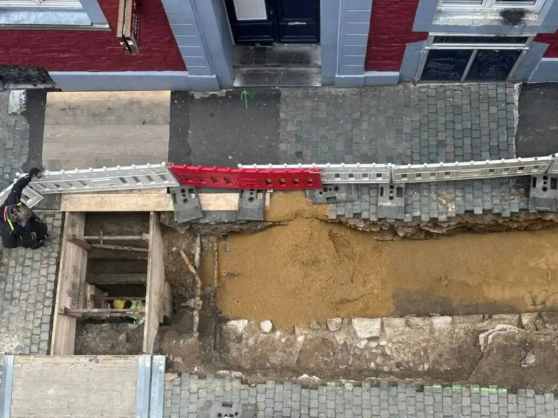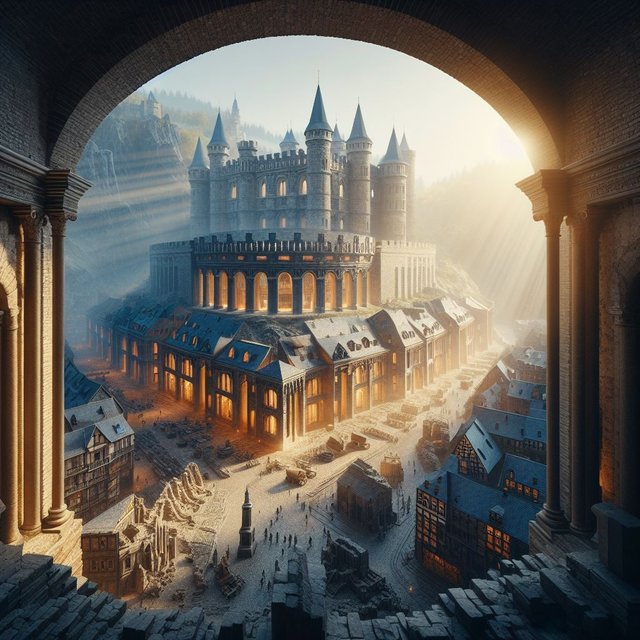Unearthing History: Aachen’s Ancient Roman Fort Revealed
For over a century, whispers of an ancient Roman fort buried beneath Aachen, Germany, stirred the imaginations of its residents. Now, a serendipitous construction project has brought these long-held beliefs into the light of day.
The Legendary Fortress Emerges
Stefan Herrmann/City of Aachen A bird’s-eye view of the excavation site.
In the heart of Aachen, archaeologists have unearthed a Roman fortress, silent and stoic, dating back 1,700 years. This bastion, thought to have been erected as a bulwark against barbarian onslaughts, was once mere lore among the townsfolk for nearly a century and a half.
Validating the Lore of Legends
Stefan Herrmann/City of Aachen Researchers beside the fort’s ancient wall.
The tale begins some 140 years ago, with the people of Aachen—nestled near the borders of Belgium and the Netherlands—believing their town cradled a once-majestic Roman fortress.
Yet, this piece of history remained unverified—until now. This year, a construction endeavor unearthed a startling find.
In a press release, the city announced that Regionetz, a utilities and construction firm, is revamping the local water, gas, and electricity infrastructure. In tandem, they joined forces with sk ArcheoConsult, an archaeology team, to scour the site for historical treasures.

From Myth to Reality
The archaeologists, while delving into Aachen’s urban core, stumbled upon the remnants of a venerable stone wall. Its Roman identity was unmistakable.
“Amidst the refurbishment of a canal house connection, we laid bare the foundation of a formidable edifice, unmistakably Roman in its construction technique,” declared Dr. Donata Kyritz, an archaeologist and proprietor of sk ArcheoConsult, in the city’s statement.
“The wall’s craftsmanship left no room for doubt; it was unmistakably Roman,” Dr. Kyritz conveyed to Live Science. “The mortar, akin to modern concrete, and the selection of stones were quintessentially Roman. Moreover, the foundation’s dimensions and construction diverged from medieval methods.”
Sparking New Inquiries
Andreas Schaub/City of Aachen An illustration hypothesizing the Roman walls’ layout beneath the contemporary city center.
To date, the archaeologists have excavated a segment of the wall, 23 feet in length and 35 inches in breadth, along with pottery shards and animal remains. The full expanse of the structure remains a mystery.
The Romans likely erected this barrier in the third century C.E., amidst escalating barbarian incursions. The city’s communiqué notes that Frankish raids had razed Aachen circa 275 C.E., prompting the Romans to construct a defensive stronghold, a castrum, encircling the town’s marketplace.
“We surmise that the castrum was a response to Germanic tribe raids around 275 and 276 A.D.,” Andreas Schaub, an archaeologist on the dig, informed Live Science. “It’s uncertain whether a garrison of soldiers manned the castrum or if the locals manned the defenses. What is certain, however, is its effectiveness; we’ve found no evidence of significant destruction post-construction.”
The castrum, featuring a wall, towers, and a nearly 20-foot-wide moat, stood sentinel in the town’s core until its dismantling in the 12th century.
Its precise location was a mystery—until remnants of the moat surfaced in 2011.
Now, scholars posit that the fort might encircle the city’s nucleus in a circular pattern. Further digs are essential to ascertain the wall’s true dimensions and form.


